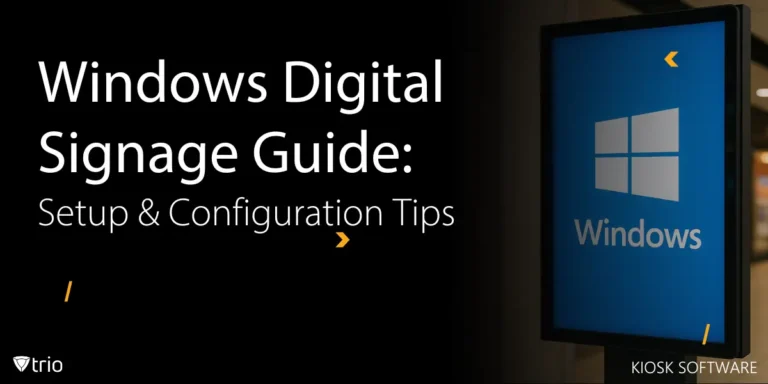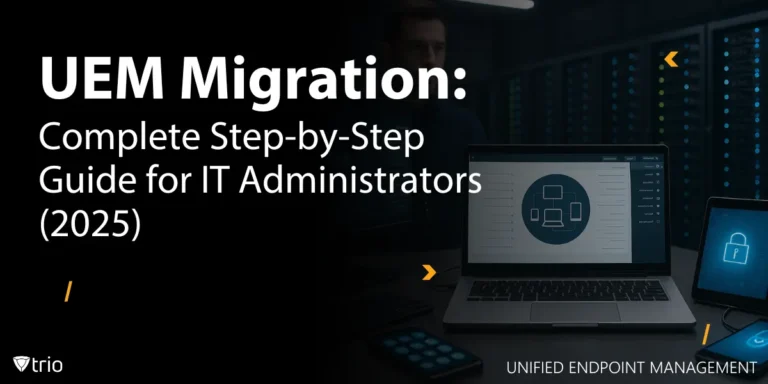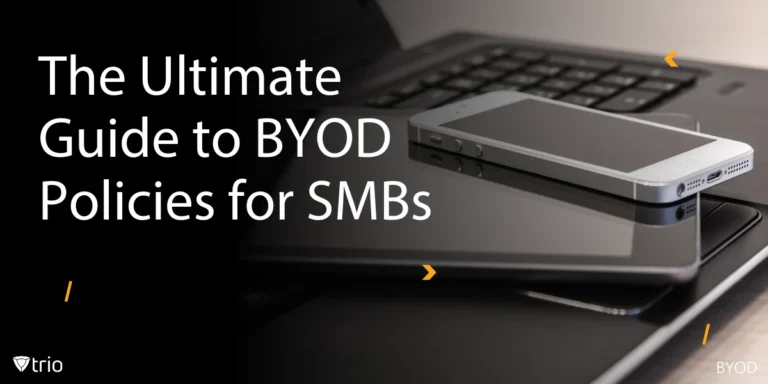In today's digital world, the concept of "Choose Your Own Device" (CYOD) has become an important factor for businesses and organizations. It's about choosing the device employees want to use for work. Along with the CYOD, companies might also follow BYOD policies (Bring Your Own Device). CYOD policies don't give many choices to the employees, the range of devices they can choose is limited. On the other hand, BYODs are even more varied because there are different people with different choices of devices on their own. The thing that makes CYOD so special is that it allows easier management and monitoring possibilities. In this blog, we'll talk about the balance between privacy and security within CYOD policies. It's not just about picking a gadget; it's about ensuring that personal information stays secure while allowing employees the flexibility they need to excel in their roles.
Advantages and Disadvantages of CYOD for Organizations
CYOD policies come with a set of advantages and disadvantages that organizations should carefully consider. On the good side, CYOD empowers employees by giving them a choice for their work devices, improving productivity. Moreover, CYOD can lead to cost savings for organizations, as employees often take better care of devices they've chosen themselves, reducing the need for frequent replacements.
However, it's important to recognize the potential downsides as well. Managing a wide range of devices can create challenges for IT departments, as they need to have compatibility, security, and compliance across different platforms. Also, maintaining privacy and security standards becomes crucial, as personal devices may not always meet the same level of security protocols. Striking a balance between the benefits and risks of CYOD is essential for organizations.
Another challenge IT admins might face while their company is using CYOD policies is making sure all different platforms and devices work smoothly together. They need to make sure everything stays safe and secure, which can be a bit tricky when people are using their own devices.
Developing a CYOD Policy
A comprehensive CYOD policy is like a map, guiding everyone in the organization on how to choose, protect, and use their devices in a way that keeps everything running smoothly and securely. For example, if the company uses a specific type of computer system, like Windows or Mac, they might want to choose the specific operating systems that are welcome to the organization.
Setting up rules for employee access to company data is a bit like making sure only the right people have keys to certain rooms in a building. It's important to decide who should be allowed to see and use different types of information. This helps keep things organized and secure, just like you wouldn't want anyone wandering around in a restricted area.
For example, there might be some information that's okay for everyone to see, like general company updates. But there could be other things, like sensitive financial data or private customer information, that only certain trusted employees should have access to. By having clear rules in place, companies can ensure that their important data stays safe and only gets into the hands of the people who really need it. It's like putting up signs that say, "Authorized Personnel Only," to make sure everything runs smoothly and securely.

Implementing MDM Solutions
Let's talk about MDM solutions and how they help with managing CYOD. MDM stands for Mobile Device Management. These solutions play a big role in making sure everything runs smoothly in a CYOD setup.
Think of MDM as the control center that keeps an eye on all the devices in an organization. It helps set up the devices, install important apps, and make sure they're secure. It's like a digital guardian making sure everything is in order.
MDM also lets IT admins remotely manage and troubleshoot devices. So, if there's ever a problem, they can check in and fix it without having to physically touch the device, which saves a lot of time.
In a CYOD policy, MDM is like the hidden guardian, making sure everyone's chosen devices are working well and staying safe and secure. It's a crucial part of the whole CYOD adventure.
MDM solutions come with some interesting features. One of them is the ability to do a "remote wipe," which is hitting a reset button on a device remotely, erasing all the data. Then there's "device tracking," which is like having a GPS for gadgets, helping you find them in case they go missing. And last but not least "application management," which is like being able to pick and choose which apps are allowed on the device. These features make MDM solutions super handy in keeping everything secure and organized in a CYOD setup.
Selecting the right MDM solution is like finding the perfect tool for a job. It involves evaluating options based on factors like ease of use, device compatibility, and essential features such as remote wipe and application management. Considering cost and support is crucial too. This careful selection ensures a smooth and secure CYOD policy, setting employees up for success with their chosen devices.
Spotting potential security risks with CYOD is like being a detective searching for clues. It means looking out for situations where sensitive information might be at risk. This could be due to things like weak passwords, unsecured networks, or even lost or stolen devices. It's a bit like finding holes in a fence and patching them up to keep everything safe inside. By identifying these risks, organizations can take steps to strengthen their CYOD policy and keep their data secure.
Implementing network protection measures is like adding layers of security to the organization. It involves using tools like firewalls, antivirus software, and encryption to safeguard the digital routes. A firewall acts like a barrier, blocking unauthorized access. Antivirus software is like a guard, keeping an eye out for any potential threats. Encryption is a secret code that keeps information safe from attacks. These measures work together to create a strong defense, ensuring that the network stays safe and secure.
Addressing employee concerns about privacy and personal data is like having an open conversation. It's important to listen and reassure them that their privacy matters. Explaining the measures in place, like encryption and access controls, helps build trust. Just like respecting someone's personal space, respecting their digital privacy is crucial. This open dialogue creates a balanced approach where employees feel valued, and their data remains secure.
Setting clear guidelines for data access and monitoring is like creating a roadmap. It defines what information can be seen and checked by the organization. This ensures everyone knows the boundaries. These guidelines create a structured and secure environment for handling data within the organization.

Balancing Employee Privacy and Network Security
Balancing employee privacy with network security is like finding the spot between trust and protection. It's crucial to respect personal space while ensuring data stays safe. This means setting clear boundaries and using tools like encryption. Just like in a good relationship, open communication and mutual respect are key. This balance creates a work environment where privacy is valued, and data remains secure. BYOD challenges add another layer of complexity to this delicate balance, as employees use their personal devices for work purposes.
Continual device monitoring is like giving your car regular check-ups. It ensures everything runs smoothly and catches any issues early. This ongoing care helps prevent problems and keeps the network secure. Just like taking care of your possessions extends their lifespan, regular monitoring and maintenance ensure devices stay reliable and secure. With BYOD, it's essential to monitor not only corporate-owned devices but also employees' personal devices to ensure compliance with security policies.
Regular updates and patches give the devices the fuel to go. They help fix any small bugs and make sure everything runs smoothly. This goes for both the devices themselves and the MDM solutions that manage them. By staying up to date, you're ensuring that everything stays secure and efficient in the long run. BYOD challenges can complicate this process, as employees may be responsible for updating their own devices, requiring clear communication and guidance from IT departments.
Conclusion
Effectively managing CYOD with MDM involves establishing clear policies, selecting the right solution, implementing security measures, educating employees, and maintaining device integrity. These steps balance personal choice with data security, creating a robust framework for organizational success.
Trio, as an MDM solution, plays an important role in enabling CYOD policies. It offers a user-friendly platform that empowers employees to select and manage their own devices while ensuring security and compliance. With features like remote wipe, application management, and device tracking, Trio provides a great defense against potential risks. Its interface and comprehensive tools make it an invaluable asset in creating a balanced and secure CYOD environment for organizations. You can check out these features on Trio. Try out Trio for free today!
Get Ahead of the Curve
Every organization today needs a solution to automate time-consuming tasks and strengthen security.
Without the right tools, manual processes drain resources and leave gaps in protection. Trio MDM is designed to solve this problem, automating key tasks, boosting security, and ensuring compliance with ease.
Don't let inefficiencies hold you back. Learn how Trio MDM can revolutionize your IT operations or request a free trial today!





